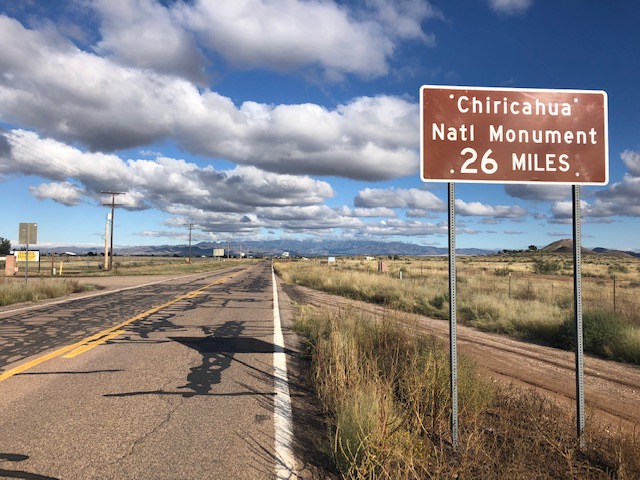Well, the night was falling as the desert world
Began to settle down…
In the town they're searching for us everywhere
But we never will be found…
Paul McCartney’s 1970’s ode to freedom and escape booms from the mobile receiver on the 120-mile drive from Phoenix to Tucson, a two hour stretch of austere desert wilderness. This desolate tract inspires and always has, calling to mind the old Paul Shephard quote, a great passage on a great passage, recognizing the desert as “an environment of revelation, genetically and physiologically alien, seriously austere, esthetically abstract, historically inimical… “ As to forms bold and suggestive, sparkling rock boulders dot the landscape against a backdrop of craggy mountain lines etched against a pure azure sky. Sagauro cacti wicket past my rattling rental car, the large, looming, ruling royal family class of desert plant life being one of the finer example of trees the Lakota people are fond of calling The Standing People. This upstanding flora family and arborescent species grows to be over 40 feet tall and lives to be 150 years old, green-gray figures indelibly linked to the American South West.
“…To the deserts go prophets and hermits; through deserts go pilgrims and exiles. Here the leaders of the great religions have sought the therapeutic and spiritual values of retreat, not to escape but to find reality”, concludes Shephard. The scholarly, serious take on life as a desert rat is a nice juxtapose with more breezy radio commentary like the now jamming opening chords to the Beatles Get Back, Sir Paul noting that “Jo Jo left his home in Tucson, Arizona for some California grass.” I read that McCartney has a hidden ranch someone near Tucson, and a quick online search now reveals that Paul purchased 151 acres near the Tanque Verde River in the foothills of the Rincon Mountains, northeast of Tucson in 1979. Linda Eastman attended the University of Arizona, where she studied art history and developed an interest in photography.
Good for the McCartneys, as the unknowing, non-local and majority of people who aren’t ex-Beatles will not head to the south east on the 17 out of Phoenix, but rather to the boring north, up to the supposed magical red rock area around Sedona. But if you really know your way around Arizona — and I’m happy to say I do, having resided there from 1998-2006— you’ll take the I-10 south to Tucson and past to Texas Canyon, out to the east and well beyond. There the old stagecoach route of the Butterfield Overland Mail passed through until the Civil War’s outbreak in 1862, when the stage line suspended operations. The canyon stands historically within the range of the Chiracahua Apache and their leader, the brilliant military strategist Cochise.
Here he made his stronghold in the Dragoon Mountains, a rough woodland area that lies like a protective rampart of granite domes and sheer cliffs, once the refuge of his people. Upon his death, Chochise was buried somewhere in or near this impregnable stone fortress, the exact location having never been revealed or determined. Not far from this spot is Apache Pass and Fort Bowie, the US Army’s 19th-century outpost. Geronimo, another Apache leader and legend of the untamed American frontier, rode these trails as well. A naturally gifted hunter, the story goes that as a boy he swallowed the heart of his first kill to ensure a life of success on the chase. Being on the run certainly defined Geronimo’s way of life. As a member of the Bedonkohe, the smallest band within the Chiracahua tribe, Apaches were surrounded by enemies. Not only Mexicans, but other tribes including the Diné or Navajos and Comanches.
Cut into this austere country are the rough roads these warrior-chiefs rode and ran on their way to distinction. While their world was snatched away piecemeal by parcel-grabbing settlers, miners and others, these brave leaders worked in battle and in peace to protect their land, their people and their way of life. Hardship and a hard land helped form their superior character, just as Jesus, too, was led into the desert wilderness to fast for 40 days and nights, facing his demons and passing the devil’s tests. We’ll be back in Cochise County and Chiracahua National Monument’s Wonderland of Rocks with some new travelogues right after Christmas. And we’ll close with an excerpt from Reiner Maria Rilke’s poem The Man Watching, another great take on the desert and the power of demon brawling.
What is extraordinary and eternal
does not want to be bent by us.
I mean the Angel who appeared
to the wrestlers of the Old Testament:
when the wrestlers' sinews
grew long like metal strings,
he felt them under his fingers
like chords of deep music.
Whoever was beaten by this Angel
(who often simply declined the fight)
went away proud and strengthened
and great from that harsh hand,
that kneaded him as if to change his shape.
Winning does not tempt that man.
This is how he grows: by being defeated, decisively,
by constantly greater beings.


